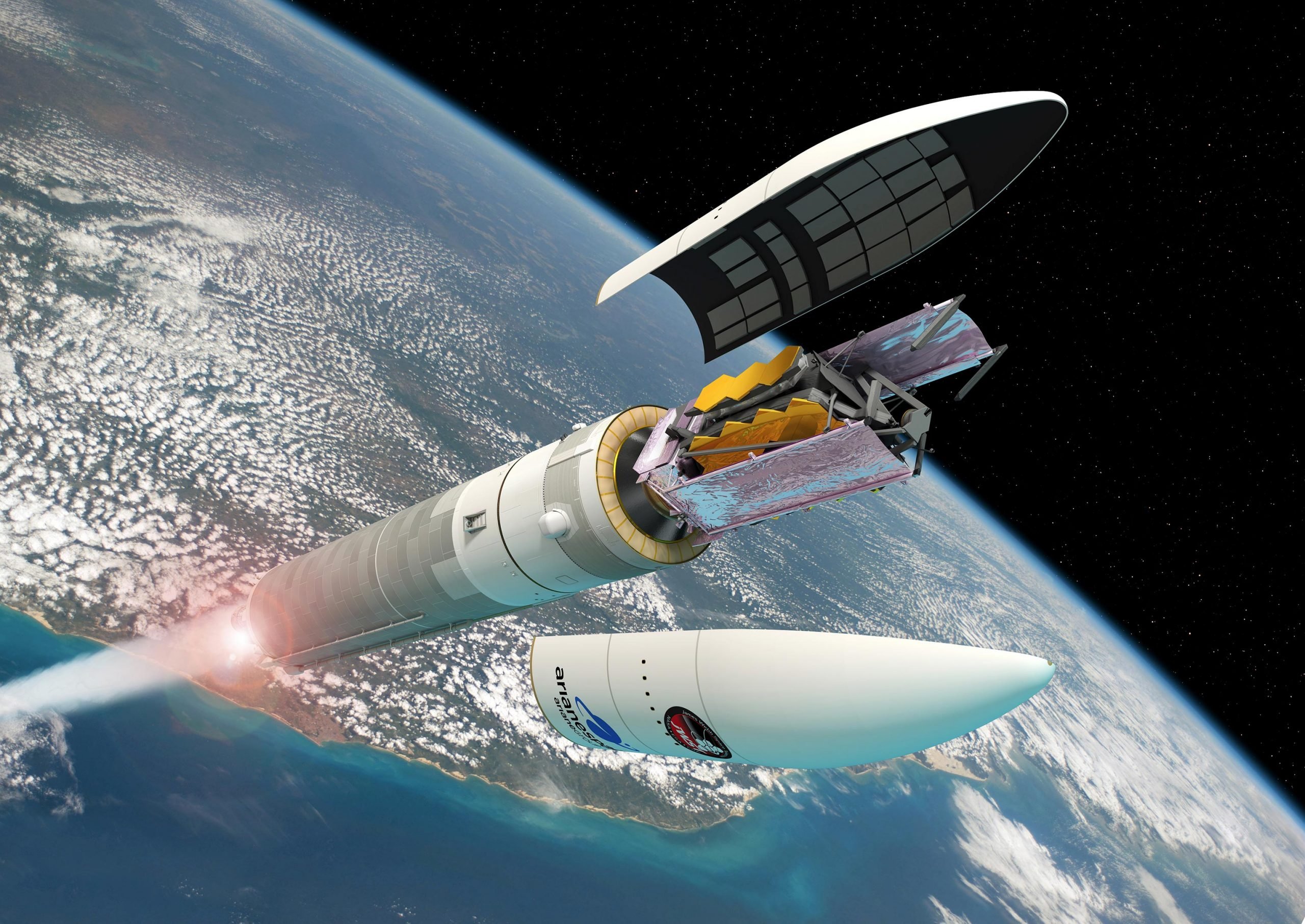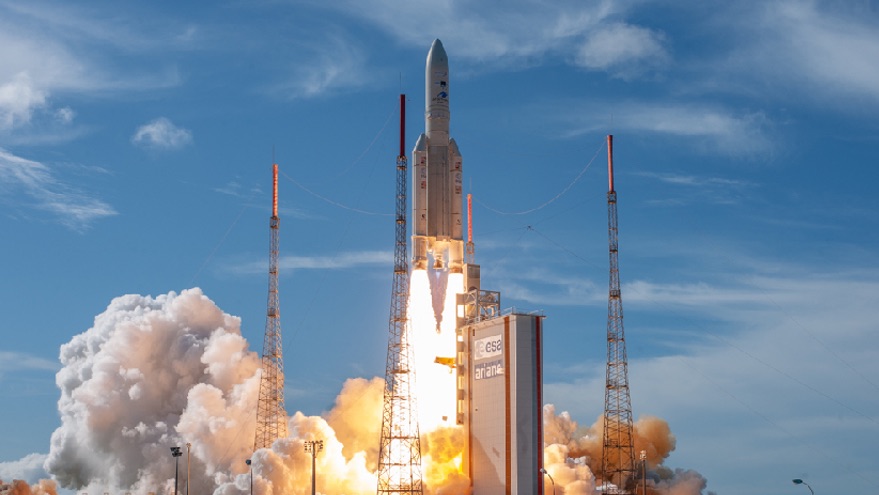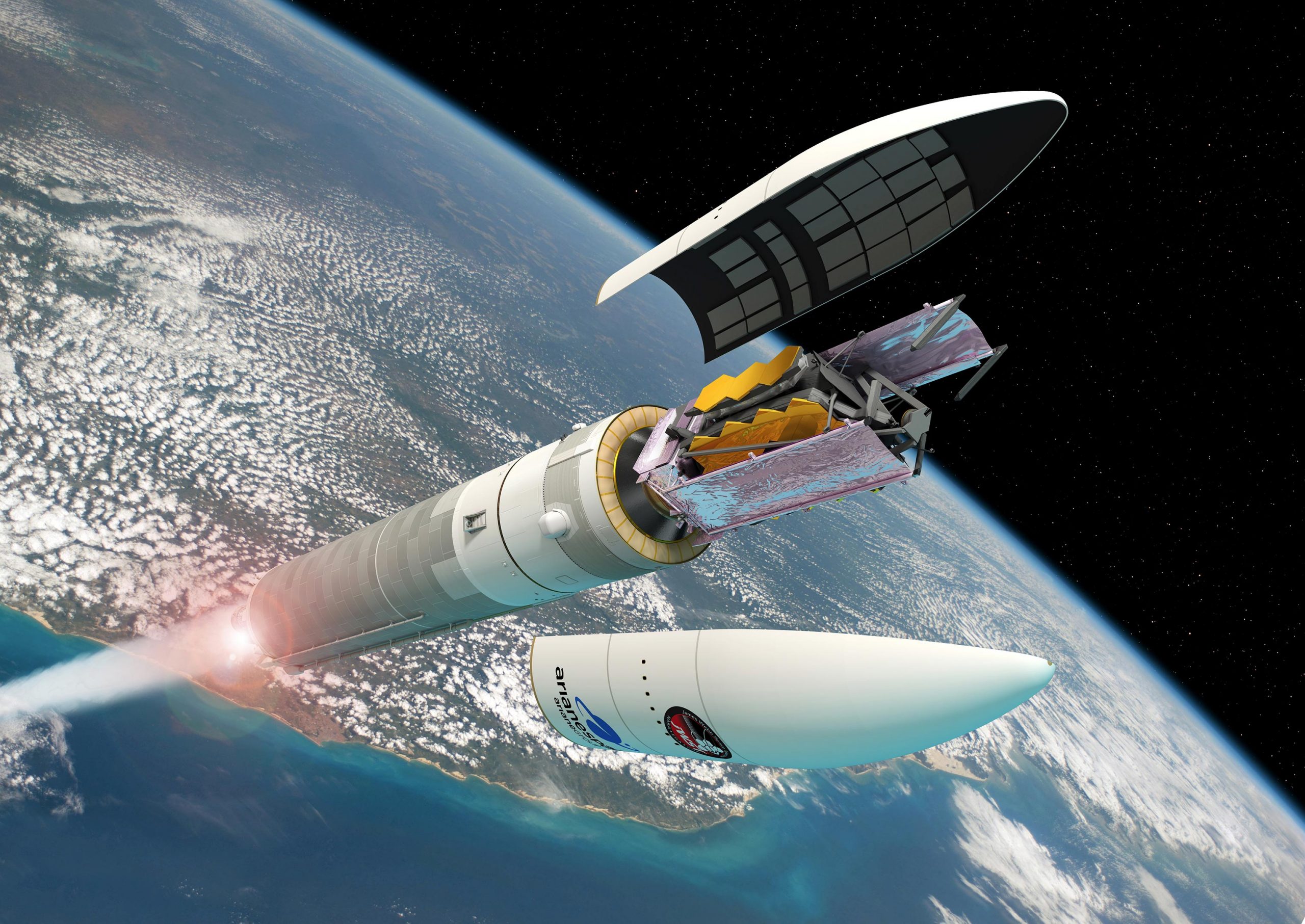
The Rocket Launching The James Webb Space Telescope
Webb has a long list of goals including looking back in time through the universe and discovering new and invaluable information. In order to do this, the JWST has to be very big allowing it to gather as much light as possible. While great in space this presents a big challenge for launching such a large telescope. However, a complex telescope design along with a unique launch vehicle is facilitating the launch of Webb.
The rocket launching the James Webb Space Telescope will be the Ariane 5. This rocket is the best option for Webb because of its size, power, launch configuration, and more. All of which are necessary when launching the biggest space telescope ever created. Even with the power and size provided by the Ariane 5, a large majority of the JWST will need to fold and retract prior to launch.
There is a long list of launch vehicles around the world with different capabilities, pros, and cons. When picking the launch vehicle for the JWST a lot of thought went into each aspect of the rocket and not just the size. With Webb being developed over multiple decades and costing around $10 billion, the right option is necessary. Additionally, a single mistake could destroy all the work and investment that has gone into this project.
Mission Overview

The James Webb Space Telescope will be launched on top of an Ariane 5 rocket. This is part of the European contribution to the mission. The Ariane 5 is a heavy-lift launch vehicle that is considered to be very reliable and practically the best option for this mission. Specifically, it is one of the world’s most reliable launch vehicles that are capable of delivering Webb to the unique destination in space. There are multiple versions and variants of the Ariane rocket however Arianespace only uses one version of the launcher which is the Ariane 5 ECA.
This ensures that its production is standard and availability is regular. The European Space Agency or ESA has agreed to provide an Ariane 5 launcher and associated launch services to NASA for Webb. With so much work, money, and time going into the James Webb Space Telescope, a very reliable launch vehicle was necessary. As of June 28, 2017, the Ariane 5 has a record for successful consecutive launches of 80. In addition to using the Ariane 5, this launch will happen from Arianespace’s ELA-3 launch complex at European Spaceport located near Kourou, French Guiana. This location is near to the equator which can help give an additional push when launching rockets.
Webb & Ariane 5 Features

Size – The first important aspect of the Ariane 5 in relation to this mission is the size. As we know the James Webb Space Telescope is massive. So massive that it needs to fold into a much smaller telescope to fit within the fairings of practically any launch vehicle. However, when folded the JWST is still a very big telescope. The Ariane 5 features not only a large rocket but massive fairings with enough room to hold Webb. Specifically, the Ariane 5 fairings are 17 meters high and have a diameter of 5.4 meters. This is exceptionally large for the commercial market and makes this launch vehicle a great option for the JWST. Taking a look at the entire rocket, this specific model of the Ariane 5 comes in at 50.5 meters tall, 5.4 meters in diameter, and has a mass of 780 tons. This additional size features primarily propellant storage along with additional solid boosters which provide the necessary power for missions of this distance and size.
Power – Another feature of the Ariane 5 that is necessary for Webb is power. Not only is the JWST very big but also heavy. Not to mention it is headed to a solar orbit rather than one around Earth. The Ariane 5 is capable of carrying payloads weighing more than 10 metric tons to geostationary transfer orbit or GTO, and over 20 metric tons into low Earth orbit or LEO. Starting at the bottom of this rocket you have the first stage. Specifically, the core stage is powered by a single Vulcaine 2 engine. This engine develops 1,290 kilo-newtons of maximum thrust in a vacuum. In addition, the nozzle is gimballed for pitch and yaw controls. This powers the cryogenic main stage at the center of the Ariane 5.
This stage carries a propellant load of 132.27 metric tons of liquid oxygen and 25.84 metric tons of liquid hydrogen to feed the main engine. On either side of this core stage is the solid rocket boosters or SRBs. The Ariane 5 utilizes two solid boosters each standing more than 30 meters tall with 237.8 metric tons of propellant. Overall they deliver more than 90 percent of the launcher’s total thrust and burn for 130 seconds. You then have the cryogenic upper stage. The Ariane 5 ECA launcher version utilizes the ESC-A cryogenic upper stage which is powered by an HM7B engine. This engine is very reliable and develops 67 kilo-newtons of maximum thrust in a vacuum. Lastly, before the fairings is the payload adapter. This ensures interfaces between the launcher and its payload. Some of the features include a conical or cylindrical structure with an upper interface compatible with the spacecraft, and a bottom bolted interface with the launcher.
Launch Configuration – The last feature of the Ariane 5 and its relation to the James Webb Space Telescope is the launch configuration. As I mentioned prior, because of the large size of Webb, the telescope needs to fold up prior to launch to fit within the farings of the Ariane 5. Once in space one of the first deployments will be the solar array, then a high gain antenna, and the sun shield pallet deployments. You then have the deployable tower assembly and the momentum flap deployment. At this point, the sun shield membrane cover releases exposing the top layer of the shield. Next is the sunshield mid-boom deployment followed by the sunshield membrane tensioning.
Moving to the mirror you have the secondary mirror support structure and the aft deployable radiator. Then the primary mirror wing gets deployed on either side. Lastly, you have an orbital injection burn putting the James Webb Space Telescope in the perfect position. Each of these deployments and movements has to happen prior to putting the JWST inside the Ariane 5. All of which is necessary when trying to get the large telescope to fit inside the fairings. When fully deployed and unfolded the James Webb Space Telescope takes up much more room than provided within any launch vehicle. This is why so many different parts of the telescope need to retract and fold including the primary mirror. In addition, a lot of work went into ensuring the telescope would not only fit but survive the violent forces during launch.
Conclusion
Launching any big payload can become a concern and challenge depending on the size and launch vehicle available. Webb’s massive size meant the Ariane 5 would be one of the best options out there. This is because of many reasons including the launch vehicle’s size, power, and launch configuration. All of which combine into a single rocket with the capabilities to successfully launch Webb. Multiple decades along with around $10 billion have gone into this project. This is another reason why picking the best launch vehicle is paramount for this mission. With the launch only a few days away we will have to wait and see how it goes and the impact it has on the space industry over time.
